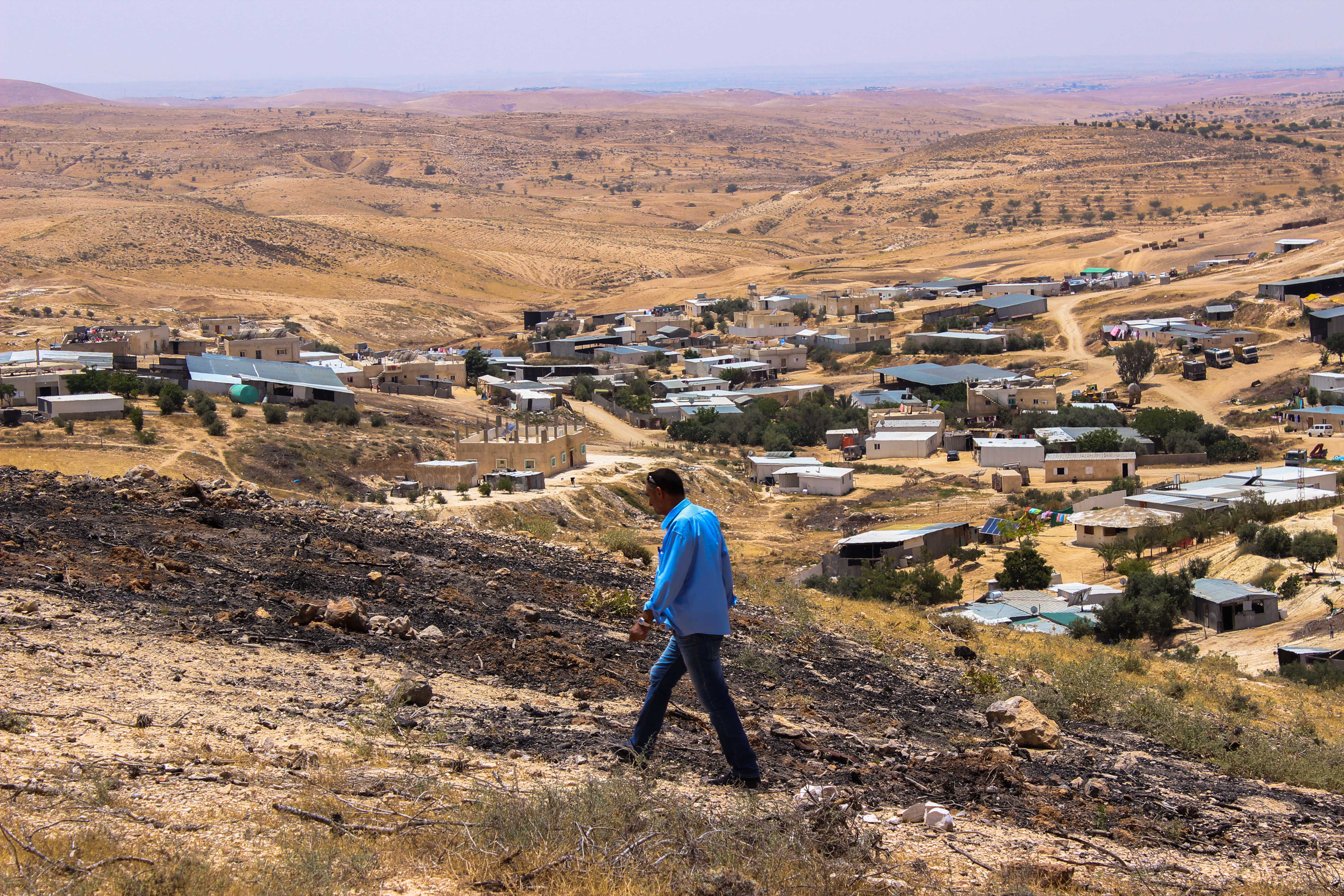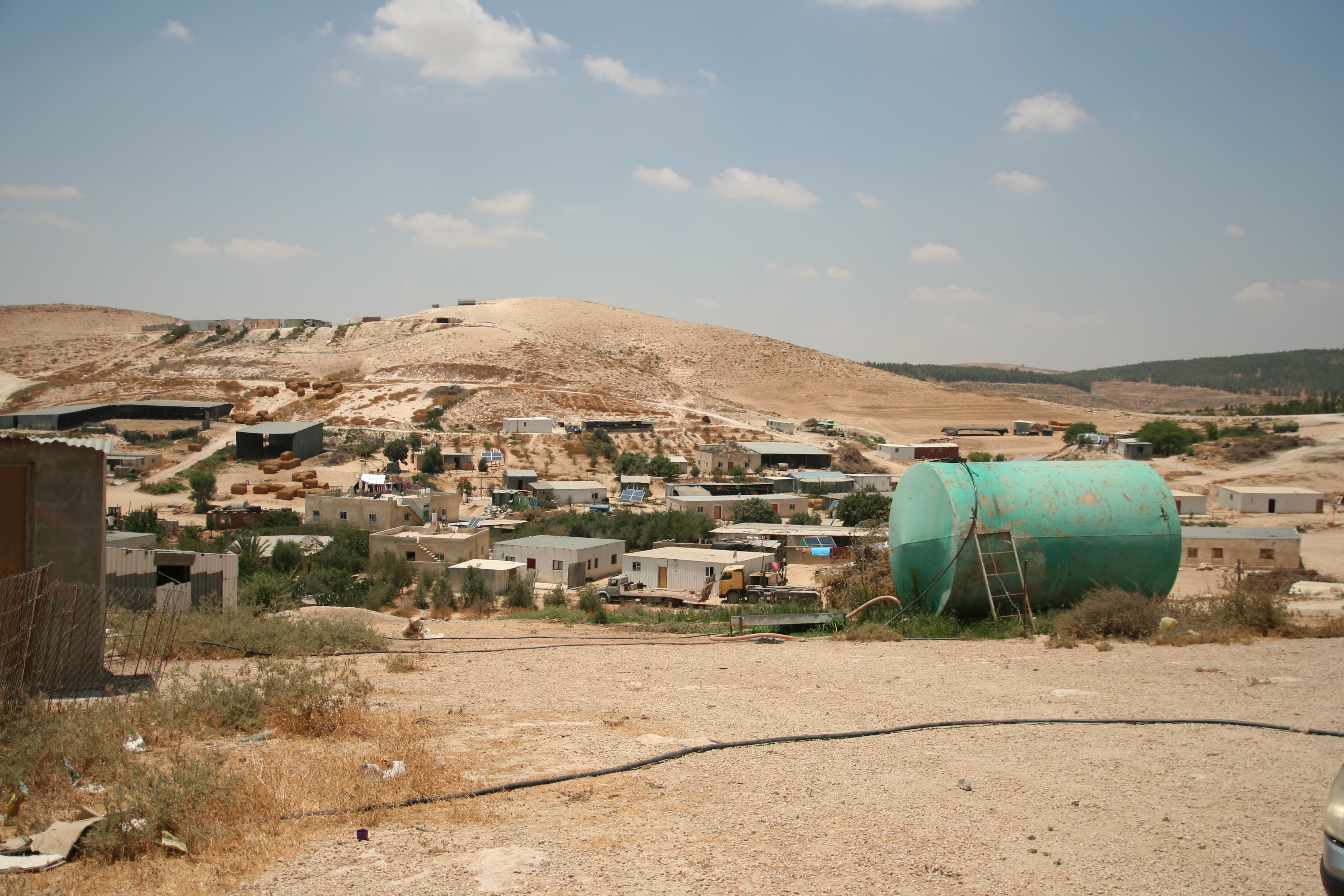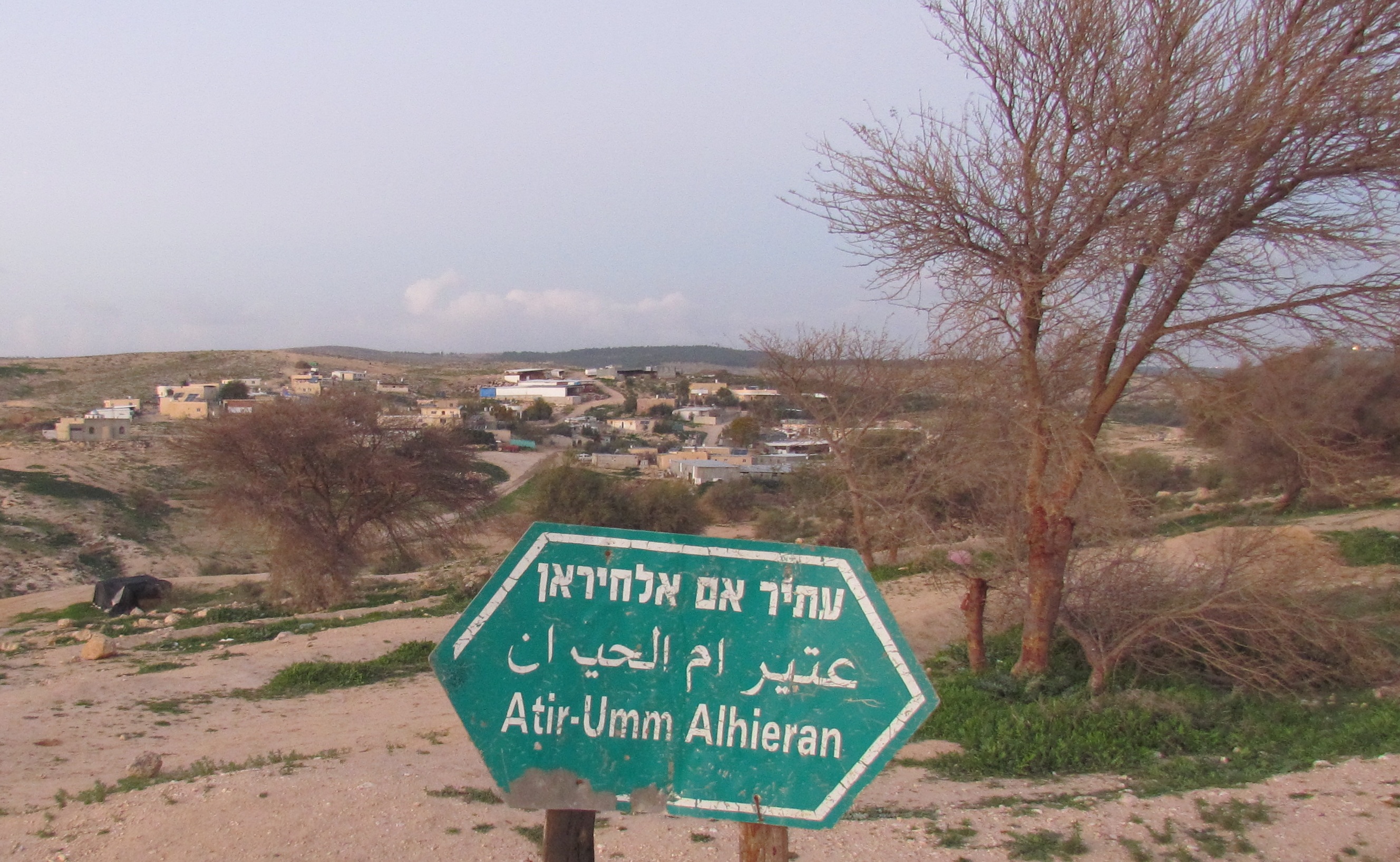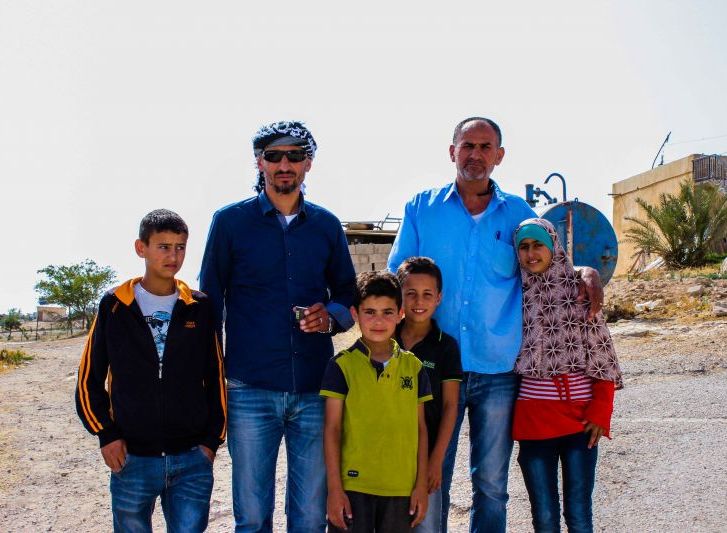The Dangerous Implications of the Israeli Supreme Court's Decision on Atir-Umm al-Hiran

- Legally, the Atir-Umm al-Hiran case is critical because the Court’s approval of the state’s plans to destroy the village means that the state can also destroy the other 35 unrecognized Bedouin villages in the Naqab;
- The Atir-Umm al-Hiran decision goes beyond existing Prawer legislation and makes it largely redundant;
- The Court's decision is legally flawed in that it contradicts previous Supreme Court precedent and fails to recognize Bedouin citizens’ basic constitutional rights;
- The ruling has troubling parallels to the Supreme Court’s decision in the case of Susiya, a West Bank Bedouin village, and highlights the state’s common policy of forced displacement on both sides of the Green Line.
Read the position paper in PDF
The Supreme Court’s decision in the Umm al-Hiran case
On 5 May 2015, after 13 years of litigation, the Israeli Supreme Court issued its final decision in the case of the unrecognized Bedouin village of Atir-Umm al-Hiran, located in the Naqab (Negev) desert in southern Israel.[1] The 2-1 decision sets a very dangerous precedent by confirming that the state is now legally authorized to demolish the village and forcibly displace its residents, despite the fact that they hold full Israeli citizenship, and for the sole purpose of building a new Jewish town called ‘Hiran’ on its ruins, and grazing area. In its ruling, the Court acknowledged the state’s intention to demolish the Bedouin village in order to build a town “with a Jewish majority”.
Beyond the immediate and disastrous consequences for the c. 1,000 inhabitants of Atir-Umm al-Hiran, the Supreme Court’s ruling has stark legal and practical implications for the remaining 35 unrecognized villages and their 70,000 indigenous Bedouin inhabitants. It gives the state wide discretion to evacuate citizens from state land in the absence of a compelling public purpose and facilitates the implementation of further decisions and plans to displace the Bedouin in the unrecognized villages and dispossess this community of its remaining land.
- If it can happen to Atir-Umm al-Hiran, it can happen to the other unrecognized villages…
Indeed, the forced displacement of Atir-Umm al-Hiran can be regarded as a ‘hard’ legal case for the state. In demolition and evacuation cases, the state generally makes two kinds of legal arguments against those Bedouin whom it wants to displace from their land: (1) that they are “trespassers” on state land, and/or (2) that the land on which they live is not suitable for construction or residential use.
In the case of Atir-Umm al-Hiran, however, both of these arguments have been disproved in court. The Supreme Court recognized that the residents were not illegal trespassers – as initially claimed by the state – but were moved there in 1956 by Israeli military order, after being displaced from their original village of Khirbet Zubaleh, which they had cultivated for centuries. Here, the Supreme Court followed the findings of the lower courts, which ruled that the villagers were not trespassers based on archival documents provided by Adalah, at earlier stages of the litigation. Secondly, the land on which Umm al-Hiran sits is zoned for residential use: it forms part of a larger residential area in the plan for the new Jewish town of Hiran, set to be built on its ruins. The Be’er Sheva Metropolitan Plan of 2010 also zoned the land in question as residential land; however, the plan completely disregards the existence of Atir-Umm al-Hiran, along with all of the other 35 unrecognized Bedouin villages in the Naqab. Hence, in terms of the practical and legal facts, Atir-Umm al-Hiran should have been a straightforward case in which the Court decided in favor of the villagers and ruled against the destruction of their village.
Nevertheless, the court ruled that the people of Umm al-Hiran – whom it acknowledged not to be trespassing on the land, which has been designated for residential use – can be evicted from their land. The court concluded that the state had merely allowed the Bedouin citizens in Atir-Umm al-Hiran to use the land, which was state land, and that the state was therefore within its rights to revoke this decision and retake the land to do with it as it wished, even after 60 years of continuous land use and residence. Thus, according to the court’s ruling, the residents of Atir-Umm al-Hiran had acquired no ownership status or property rights to their land over the course of their decades of residence and land use.
- … even in the absence of an essential public need
Following the ruling, the state is authorized to go ahead with its plans to destroy Atir-Umm al-Hiran and forcibly displace its Bedouin residents, in the absence of an essential public need,[2] and indeed for the explicitly discriminatory purpose of building in its place the new, Jewish town of Hiran. This is what makes the court’s unprecedented decision so dangerous: the implication of the state’s legal victory is that if the people of Atir-Umm al-Hiran can be evicted from their land, then the residents of almost all of the other unrecognized villages in the Naqab can also be evicted, as they are all residing on state land and most of them are considered as illegal trespassers by the state. Furthermore, they can be evicted for a clearly discriminatory purpose, in violation of their constitutional rights to property, dignity and equality.
- The Umm al-Hiran decision goes beyond existing Prawer legislation
The Supreme Court’s ruling and the legal precedents created by the Atir-Umm al-Hiran case go beyond the scope of even the discriminatory Prawer Plan for the forcible displacement of tens of thousands Bedouin citizens of Israel from their lands and homes in the unrecognized villages.[3] The Prawer Plan and its legislation, which has been frozen since December 2013, is based on the false premises that the Bedouin have no legal claim to their ancestral land, and conceives of the residents of these villages as illegal trespassers on state land.[4] On this basis, it mandates their mass dispossession and relocation.
The Supreme Court’s ruling in the Atir-Umm al-Hiran takes a more extreme position than the unjust and discriminatory Prawer Plan by legalizing the forcible displacement of citizens of Israel which the court itself has recognized as non-trespassers. It further allows for their displacement from residential land in the absence of an essential public purpose, and indeed for an explicitly discriminatory purpose. Therefore, while the Prawer legislation may go forward in some form, it is no longer necessary for the state to pursue it to ensure the eviction of the remaining unrecognized villages. The Atir-Umm al-Hiran ruling gives the state broader legal scope for destroying these communities, and would render the chance of launching a successful legal challenge against Prawer legislation negligible.
- The Supreme Court’s ruling is legally flawed
The Supreme Court’s ruling in the Atir-Umm al-Hiran case failed to conform to the law. Even the minority opinion of Justice Daphne Barak-Erez recognized that the ruling “infringes on existing laws” and that the decision to evict the residents was “unreasonable”.
- The Supreme Court disregarded the constitutional rights' violations of Atir-Umm al-Hiran's residents. Justice Elyakim Rubinstein wrote in the majority decision dismissing the petition that there had been no violation of constitutional rights. He added that even if there had been a violation of constitutional rights, it was proportionate since the residents had been offered a reasonable “alternative” solution in the form of relocation to the government-planned Bedouin town of Hura. The Court did not deliberate on the violations of the petitioners’ constitutional rights to property, dignity and equality.
- In this respect, the decision stands in stark contradiction to the Court’s previous decision on petitions challenging the Disengagement Plan Implementation Law (Gaza) of 2005 that established a mechanism for compensating the settlers for the loss of their homes, land and businesses.[5] In this decision, the Supreme Court decided that the evacuated Jewish Israeli settlers enjoyed constitutional protection for a recognized violation of their property rights, despite the fact that the Gaza settlements are illegal under international law, that the settlers had moved there voluntarily, and that the settlements were always temporary in nature, and confirmed that a violation of their constitutional right to dignity had taken place.
- The Court relied on incorrect statements by the state. The Court’s conclusion that the decision to forcibly displace the residents of Atir-Umm al-Hiran was fair and reasonable was based on the state’s “alternative” solution of relocation to Hura. However, and setting aside the overcrowding and dire socio-economic conditions in Hura, the Hura Municipality has stated that it could not allocate any plots of lands to the residents of Atir-Umm al-Hiran due to lack of space. Thus, the court did not properly apply the principle of reasonableness and fairness since it did not examine whether the state’s decision was made on the basis of facts and actual proposals offered, which it was not.
- The Supreme Court failed to address basic legal questions raised by the petitioners. Crucially, the Court did not ask why the new town had to replace the Arab village, when there were vast and empty lands in the surrounding area. The Court did not compel the state to consider providing the Bedouin residents a plot of land to live on as part of the new town of Hiran. The Court also ignored the Bedouin residents’ political, social and historical roots to the land.
- Procedurally, once the Court had refuted the state’s assumption that the people of Atir-Umm al-Hiran were trespassers, it should automatically have resulted in a decision to cancel the state’s demolition orders against them, which was not the case.
- The ruling has troubling parallels to the Supreme Court’s decision in the case of Susiya, a West Bank Bedouin village across the Green Line
On the same day as it issued its ruling on Umm al-Hiran, 5 May 2015, the court effectively sealed the fate of the ancient Bedouin village of Susiya, located close to the Green Line in the South Hebron Hills of the West Bank.[6] In its discriminatory decision, the court ruled that the state can now demolish and forcibly displace all c. 350 Bedouin residents of Susiya. The court also, and unusually, denied a request for an interim order to freeze the implementation of the demolition pending a hearing on a petition against the demolition. The village can now be demolished at any moment.[7] This parallel case is troubling in that it highlights the state’s common policy of forcibly displacing the Bedouin on both sides of the Green Line.[8]
Motion for extraordinary second hearing
On 7 June 2015, Adalah filed a motion to the Israeli Supreme Court requesting an extraordinary second hearing on the case of Atir-Umm al-Hiran. As Adalah argued in the motion, “The 1,000 residents of Atir-Umm al-Hiran are not trespassers as they were given permission to stay on the land 60 years ago. This permission for property rights is a constitutional right that cannot be infringed upon based on the state's arbitrary decisions driven by racist motives. There has never been a ruling such as this in the Supreme Court’s history since 1948, and it permits the implementation of further plans to dispossess and displace the Bedouin of the Naqab/Negev, such as the Prawer Plan.”
As part of the growing local and international movement against the destruction of Atir-Umm al-Hiran, 29 human rights and civil society organizations in Israel, including Adalah, called the ruling “unjust, racist and discriminatory” in a front-page ad published in Ha’aretz in Hebrew on 7 June 2015.
Calls for urgent action to #Save_UmAlHiran[9]
Adalah urges the international community to:
- Call on Israel to immediately halt its plans to demolish Atir-Umm al-Hiran and forcibly displace its 1,000 Bedouin residents;
- Call on Israel to grant full legal recognition to the village, along with all the other unrecognized Bedouin villages in the Naqab;
- Engage in meaningful dialogue with the Bedouin community and the Arab political leadership to justly resolve land claims and disputes in the Naqab;
- Demand that Israel enshrine the principle of equality in its law and practices, and to insist that in a democracy, a citizen’s rights are not conditioned on their ethnic or national identity.
[1] HCJ 3094/11, Abu al-Qi’an, et al. v. The State of Israel. For English excerpts of the Supreme Court’s 5 May 2015 decision, see: http://www.adalah.org/uploads/SCT-Umm-al-Hiran-Decision-English-Excerpts.pdf
[2] Here, the ruling contradicts previous lower court decisions in the case of another unrecognized Bedouin village, Alsira, which predates the establishment of Israel in 1948. In this case, the Be’er Sheva District Court decided that the state may not evacuate the village’s residents, ruling in 2014 that, “there would need to be a strong and genuine public interest to justify the need for uprooting 350 people from their homes and displacing them” (Be’er Sheva District Court, Different Criminal Appeal 62341-01-12, The State of Israel v. Odeh Mousa Nasasra).
[3] For more information, see Adalah and the Negev Coexistence Forum for Civil Equality, The Prawer-Begin Bill and the Forced Displacement of the Bedouin, May 2013:
[4] The state has consistently refused to recognize the land rights of the Bedouin in the Naqab, which were traditionally arranged based on non-written agreements that were recognized by both the Ottoman and British Mandatory authorities. Instead, Israel has followed a policy of concentrating the Bedouin in a small number of overcrowded towns and villages, offering restricted and inadequate compensation to some Bedouin landowners in return for forsaking their claims to their ancestral land. Bedouin land disputes have never been resolved and a process of land registration that was launched by the state in the 1970s was never completed, despite widespread cooperation by the Bedouin.
[5] HCJ 1661/05, Gaza Coast Regional Council v. The Knesset.
[6] HCJ 1420/14, Susiya Village Council v. The Minister of Defense, et al.
[7] See Rabbis for Human Rights, “The Struggle against the Forced Displacement of Susya to Area A”: http://rhr.org.il/eng/save-susya/
[8] For more information, see Adalah’s short film, From Al-Araqib to Susiya: http://www.adalah.org/en/content/view/8122; and accompanying report on forced displacement on both sides of the Green Line: http://www.adalah.org/uploads/oldfiles/Public/files/English/Publications/Position_Papers/Forced-Displacement-Position-Paper-05-13.pdf
[9] Documents and other resources related to Adalah's #Save_UmalHiran campaign can be found on Adalah's website at: http://www.adalah.org/en/content/view/8550

















